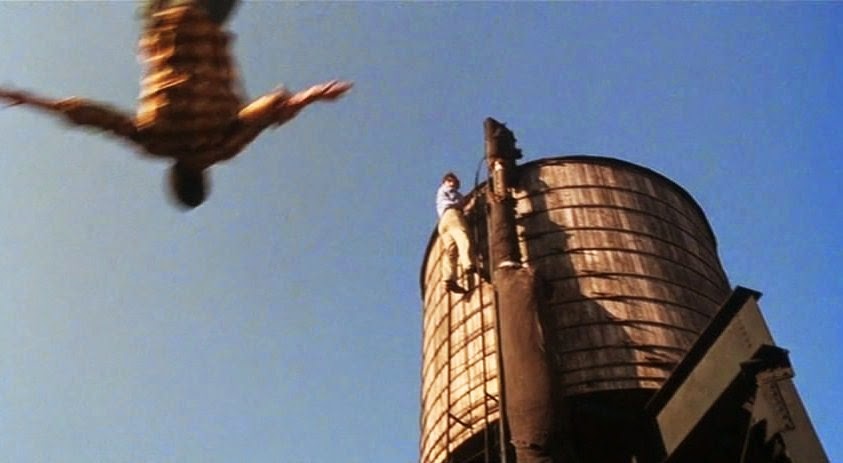Don Coscarelli, 1988
Starring: Angus Scrimm, James LeGros, Reggie Bannister, Paula Irvine
After a brief recap of the end of Phantasm, we come across Mike, now in his late teens and about to be released from a mental institution. His insistence that a Tall Man killed his brother and repurposed the bodies of the dead landed him there. He has also been dreaming of Liz, a girl Mike has never met, but is sure exists. After his release, Mike reunites with his friend Reggie and convinces him that the Tall Man is real and must be destroyed. They take Reggie’s Plymouth Barricuda across country and eventually find Liz, who shares a deep psychic bond with Mike. The threesome, along with a hitchhiker named Alchemy, try to stay alive and defeat the Tall Man once again.
This follow up to Phantasm reunites writer and director Don Coscarelli with stars Reggie Bannister and Angus Scrimm nearly ten years after the first film. I would recommend Phantasm II only to fans of the original — it’s not really an ideal introduction to the series, though there is plenty about it to enjoy. As with most ‘80s sequels, there is more of everything: more guns, chainsaws, mortuary equipment, blood, gore, cars, nudity, explosions, and even more of the Tall Man. There are also some great effects from the legendary Greg Nicotero and the gross-out factor is higher here.
This was Coscarelli’s biggest budget for a Phantasm film at $3 million, though at the time, it was Universal’s smallest budget for a film. This was somewhat of a double-edged sword for the series. Yes, things are bigger, but not necessarily better. The studio exerted some control, insisting that Coscarelli include fewer dream sequences and surreal elements; in other words, the things that made Phantasm so unique. But all of Don Coscarelli's films have moments of undeniable weirdness, from The Beastmaster and Bubba Ho-tep to his latest, John Dies at the End, so never fear — the script doesn’t make a whole lot of sense and there are plenty of elements that might confuse viewers.
A controversy surrounding the film was the casting of James LeGros as Michael. I didn’t really have an issue with this. While this film was made nearly 10 years after the original and the first actor (Michael Baldwin) would have loosely been the correct age, it’s pretty standard to recast an older looking actor in a sequel if the original character was a child or young teen. He also works very well with Reggie Bannister. The acting and group camaraderie is on par with the first film. Reggie Bannister kicks even more ass here (miss that ice cream truck, though) and Paula Irvine (Doin’ Time on Planet Earth) is likable as Liz, who is a surprisingly welcome addition to Mike and Reggie’s little group. The group also wouldn’t be complete without the car — the Barricuda returns, but is sadly blown up. It’s still as sexy as ever, though and there is a car chase scene with some nice stunt driving.
There are plenty of things about this film that don’t make any sense, though I can't help but love it anyway. While there are many jump scare moments and far more gore, this lacks the mood and atmosphere of the first film and it certainly lacks the sense of dread. We do learn more about the world, specifically that it’s the Tall Man’s pattern to travel to small towns and suck them dry, killing everyone and harvesting the corpses until he is ready to move on again. But for every detail Coscarelli reveals, he also raises half a dozen more questions.
Phantasm II was impossible to find on DVD for years, so Scream Factory’s recent Blu-ray release was a welcome addition to any horror fan’s collection. It has a number of great special features, including a commentary track and some interviews. Phantasm II comes recommended, despite its issues, and I love it nearly as much as the first film.














